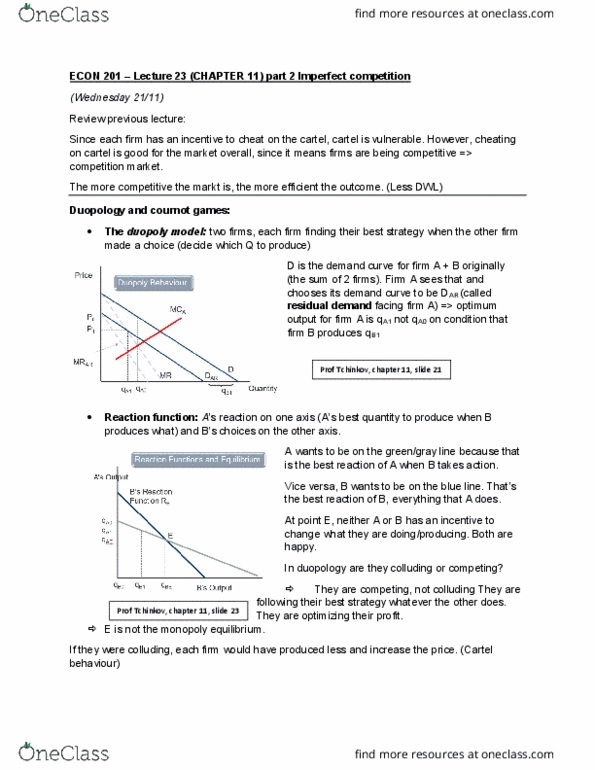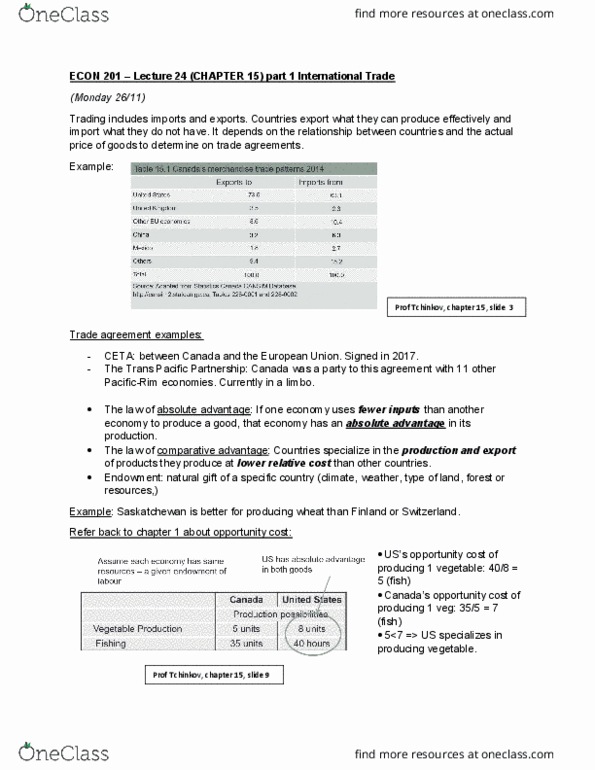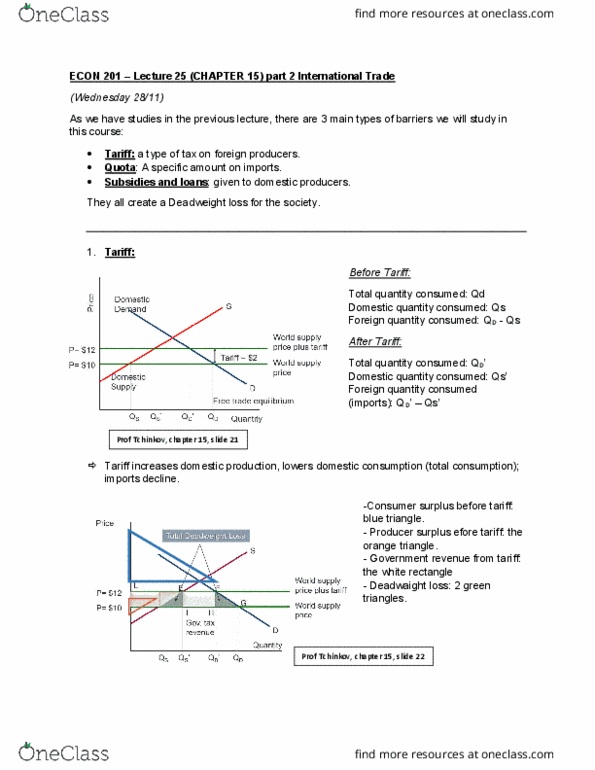31. A country's tax system influences the attractiveness of investing in that country and affects the relative level of profitability for an MNC.
a. True
b. False
32. Points inside a production possibilities frontier represent
a. unattainable production combinations
b. efficiency
c. situations where supply exceeds demand
d. unemployment of resources
33. Firms in a high-wage nation like the U.S. can compete effectively with imports from low-wage nations if
a. the U.S. reduces tariffs on imports
b. low-wage nations impose tariffs on U.S. made goods
c. labor productivity is higher in the low-wage nation
d. labor productivity is higher in the U.S.
34. Assume that production in the United States is valued at $100,000. National income is therefore $100,000. Of their income, workers save $2000, pay $6,000 in taxes, spend $89,000 on consumer goods, and spend $2000 on imports. Businesses spend $5,000 in new investment spending. And, foreigners spend $1000 on exports. To avoid any problems of inflation or unemployment, the government should have a budget deficit or surplus of:
a. $2,000 surplus
b. $1,000 deficit
c. $2,000 deficit
d. $1000 surplus
e. $0 deficit
35. Autarky means-----------------------------------------------------------------
a. the absence of government
b. lack of agriculture
c. self-sufficient, in the absence of international trade
d. short of exchange rates
36. The more people there are----------------------, the less the public as a whole will spend on goods and services.
a. unemployed
b. underemployed
c. employed
d. as discouraged workers
37, Which of the following theories holds that countries will produce and export products that use large amounts of production factors that they have in abundance?
a. Mercantilism
b. The theory of absolute advantage
c. The factor endowment theory
d. None of the above.
38. Suppose that a consumer has a marginal propensity to consume of 0.79. If this consumer earns an extra $1220, her saving would be expected to increase by-----------------------------
39. Many countries in Asia, Africa, and South America-----------------------
a. Are developing countries
b. Are industrialized nations
c. Have a high demand for nonessential products
d. Do not trade
40. Which two of the following are regarded as the main aims of the World Trade Organization (WTO)?
a) To eliminate discrimination in world trade
b) To provide financial assistance to countries with debt
c) To reduce tariff barriers
d) To make infant industry protection illegal
e) To help give preferences to smaller economies
b) and e) a) and c) a) and d) c) and e) b) and d)
41. Last year Sophia's nominal income increased by 12% while the price level rose by 5.5%. Consequently, Sophia's real income:
a. rose by approximately 7%
b. fell by approximately 1%
c. rose by approximately 2%
d. ------------------------------------
42. Consumer surplus
a. is always positive.
b. for a particular unit of consumption is computed by taking the difference between quantity demand and quantity supplied.
c. for all units consumed is the area below demand and below market price over all the units consumed.
d. added to producer surplus provides a measure of the net gain to society from the production and consumption of the good.
43. A decline in Real GDP for six or more consecutive months is called-------------------------------
a. A trough
b. A recession
c. An expansion
d. A recovery
44. What do we call the situation where capital grows faster than the labor force?
a. economic growth
b. technological change
c. productivity growth
d. capital deepening
45. The terms of trade are-------------------------------------------
a. the cost of transportation between countries
b. the ratio of wages in two countries
c. the terms which are used in the trade negotiations
d. the rate at which two products can be exchanged








